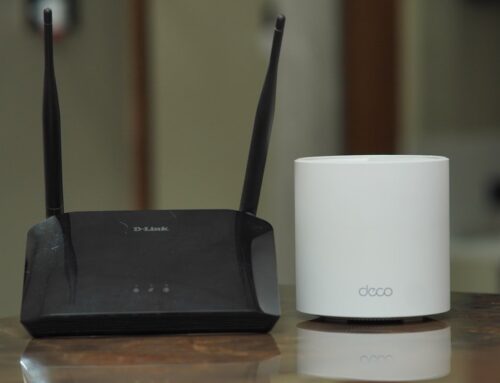
Maximizing Efficiency: The Importance of Network Management
Network management encompasses a broad range of activities aimed at ensuring the optimal performance, reliability, and security of a network. It involves the administration of both hardware and software components, including routers, switches, firewalls, and servers, as well as the protocols that govern their interactions. The primary goal of network management is to maintain a seamless flow of data across the network while minimizing downtime and maximizing resource utilization.
This requires a comprehensive understanding of various network topologies, traffic patterns, and the specific needs of the organization. At its core, network management can be divided into several key functions: fault management, configuration management, performance management, security management, and accounting management. Fault management focuses on identifying and resolving issues that disrupt network services, while configuration management deals with the setup and maintenance of network devices.
Performance management involves monitoring network performance metrics to ensure that service levels are met. Security management is critical in protecting the network from unauthorized access and cyber threats, and accounting management tracks resource usage for billing and auditing purposes. Together, these functions create a robust framework for managing complex networks effectively.
Key Takeaways
- Network management involves the administration, operation, maintenance, and provisioning of network infrastructure and services.
- Efficient network management is crucial for ensuring optimal performance, security, and reliability of the network.
- Maximizing efficiency in network management leads to improved productivity, cost savings, and better user experience.
- Strategies for maximizing efficiency include automation, proactive monitoring, regular updates, and proper resource allocation.
- Effective network management tools and technologies include network monitoring software, configuration management tools, and security solutions.
Importance of Efficient Network Management
Enhancing Business Agility
When networks are well-managed, organizations can respond swiftly to changing business needs, scale operations seamlessly, and maintain a competitive edge in their respective markets. Moreover, efficient network management plays a vital role in cost reduction. By optimizing resource allocation and minimizing downtime, organizations can avoid the financial repercussions associated with network failures.
The Consequences of Poor Network Management
For instance, a retail company experiencing frequent outages may lose sales opportunities and damage its reputation among customers. In contrast, a well-managed network can facilitate better inventory management, improve customer service, and ultimately lead to increased revenue.
A Strategic Imperative for Business Success
Therefore, investing in efficient network management is not merely a technical necessity; it is a strategic imperative that can drive business success.
Benefits of Maximizing Efficiency in Network Management
Maximizing efficiency in network management yields numerous benefits that extend beyond mere operational improvements. One of the most significant advantages is enhanced user experience. When networks are optimized for performance, users experience faster response times and reduced latency, which is particularly important for applications that require real-time data processing, such as video conferencing or online gaming.
A seamless user experience fosters higher employee satisfaction and productivity, as individuals can focus on their tasks without being hindered by technical issues. In addition to improving user experience, efficient network management contributes to better security posture. By implementing proactive monitoring and management practices, organizations can identify vulnerabilities and potential threats before they escalate into serious incidents.
For example, regular audits of network configurations can help detect unauthorized changes that may compromise security. Furthermore, efficient network management allows for the timely application of security patches and updates, reducing the risk of exploitation by cybercriminals. This dual benefit of enhanced performance and security underscores the importance of prioritizing efficiency in network management strategies.
Strategies for Maximizing Efficiency in Network Management
| Strategy | Description |
|---|---|
| Automation | Implementing automated processes for routine network management tasks to reduce manual effort and human error. |
| Monitoring and Analysis | Utilizing network monitoring tools to continuously track network performance and analyze data for identifying and resolving issues. |
| Optimization | Regularly optimizing network configurations and resources to ensure efficient use of bandwidth and minimize latency. |
| Security Measures | Implementing robust security measures such as firewalls, encryption, and access controls to protect the network from cyber threats. |
| Regular Updates | Keeping network infrastructure and software up to date with the latest patches and upgrades to improve performance and security. |
To maximize efficiency in network management, organizations must adopt a multifaceted approach that encompasses various strategies tailored to their specific needs. One effective strategy is the implementation of automation tools that streamline routine tasks such as configuration changes, monitoring, and reporting. Automation reduces the likelihood of human error while freeing up IT personnel to focus on more strategic initiatives.
For instance, using automated scripts to manage device configurations can ensure consistency across the network while minimizing the time spent on manual updates. Another critical strategy involves adopting a proactive monitoring approach that leverages advanced analytics and machine learning algorithms. By continuously analyzing network traffic patterns and performance metrics, organizations can identify anomalies that may indicate underlying issues.
For example, if a sudden spike in bandwidth usage is detected, it could signal a potential security breach or an application malfunction. Proactive monitoring enables IT teams to address issues before they impact users or lead to significant downtime.
Tools and Technologies for Effective Network Management
The landscape of network management tools and technologies has evolved significantly in recent years, offering organizations a plethora of options to enhance their network efficiency. Network monitoring solutions such as SolarWinds Network Performance Monitor or PRTG Network Monitor provide real-time visibility into network performance metrics, allowing IT teams to quickly identify bottlenecks or failures. These tools often come equipped with customizable dashboards that present critical data in an easily digestible format, enabling swift decision-making.
In addition to monitoring tools, configuration management solutions like Ansible or Puppet play a vital role in maintaining network efficiency. These tools automate the deployment and configuration of devices across the network, ensuring consistency and compliance with organizational policies. By using version control systems integrated with these tools, IT teams can track changes over time and roll back configurations if necessary.
This capability not only enhances operational efficiency but also strengthens security by reducing the risk of misconfigurations.
Challenges and Obstacles in Network Management
Despite advancements in technology and methodologies, organizations still face numerous challenges in effective network management. One significant obstacle is the increasing complexity of modern networks. With the proliferation of cloud services, IoT devices, and remote workforces, networks have become more intricate than ever before.
This complexity can lead to difficulties in troubleshooting issues and maintaining visibility across all components of the network. Another challenge lies in the ever-evolving threat landscape. Cybersecurity threats are becoming increasingly sophisticated, requiring organizations to stay vigilant and adapt their security measures accordingly.
The rise of ransomware attacks and data breaches has made it imperative for IT teams to implement robust security protocols while managing day-to-day operations. Balancing the need for security with the demand for high performance can create tension within IT departments, making it essential to develop strategies that address both concerns simultaneously.
Best Practices for Network Management Efficiency
To achieve optimal efficiency in network management, organizations should adhere to several best practices that have proven effective across various industries. First and foremost is the establishment of clear policies and procedures governing network operations. Documenting processes related to configuration changes, incident response, and security protocols ensures that all team members are aligned and can act swiftly when issues arise.
Regular training and skill development for IT personnel are also critical components of effective network management. As technology continues to evolve rapidly, keeping staff updated on the latest tools and best practices is essential for maintaining efficiency. Organizations should invest in ongoing education programs that cover emerging technologies such as SD-WAN (Software-Defined Wide Area Networking) or AI-driven analytics tools.
Future Trends in Network Management
Looking ahead, several trends are poised to shape the future of network management significantly. One notable trend is the increasing adoption of artificial intelligence (AI) and machine learning (ML) technologies within network management systems. These technologies enable predictive analytics that can forecast potential issues based on historical data patterns, allowing organizations to take preemptive action before problems arise.
Another trend is the shift towards more decentralized networking models driven by the rise of edge computing. As organizations move data processing closer to where it is generated—such as IoT devices—network management will need to adapt to accommodate this distributed architecture. This shift will require new strategies for monitoring and securing networks that span multiple locations while ensuring consistent performance across all endpoints.
Furthermore, as remote work becomes more entrenched in corporate culture, organizations will need to prioritize secure access solutions such as VPNs (Virtual Private Networks) or Zero Trust architectures to protect sensitive data while enabling flexibility for employees working from various locations. The convergence of these trends will necessitate a reevaluation of traditional network management practices to ensure they remain effective in an increasingly complex digital landscape.
Network management is a crucial aspect of maintaining a secure and efficient network infrastructure. One related article that delves into the challenges of network security is “The History and Challenges of Next-Generation Firewalls (NGFW).” This article explores the evolution of firewalls and the unique challenges faced by NGFWs in protecting networks from advanced threats. Understanding these challenges is essential for network administrators to effectively manage and secure their networks.
FAQs
What is network management?
Network management refers to the process of administering, operating, and maintaining a computer network. It involves monitoring the network’s performance, ensuring its security, and optimizing its functionality.
What are the key components of network management?
The key components of network management include network monitoring, security management, performance management, fault management, and configuration management.
Why is network management important?
Effective network management is crucial for ensuring the smooth operation of a computer network. It helps to identify and address issues, optimize performance, and enhance security, ultimately leading to improved productivity and user satisfaction.
What are some common network management tools?
Common network management tools include network monitoring software, security management tools, performance analysis tools, and configuration management systems. These tools help network administrators to monitor, analyze, and manage the network effectively.
What are the main challenges in network management?
Some of the main challenges in network management include ensuring network security, managing the increasing complexity of networks, dealing with network downtime and performance issues, and keeping up with evolving technologies and standards.







